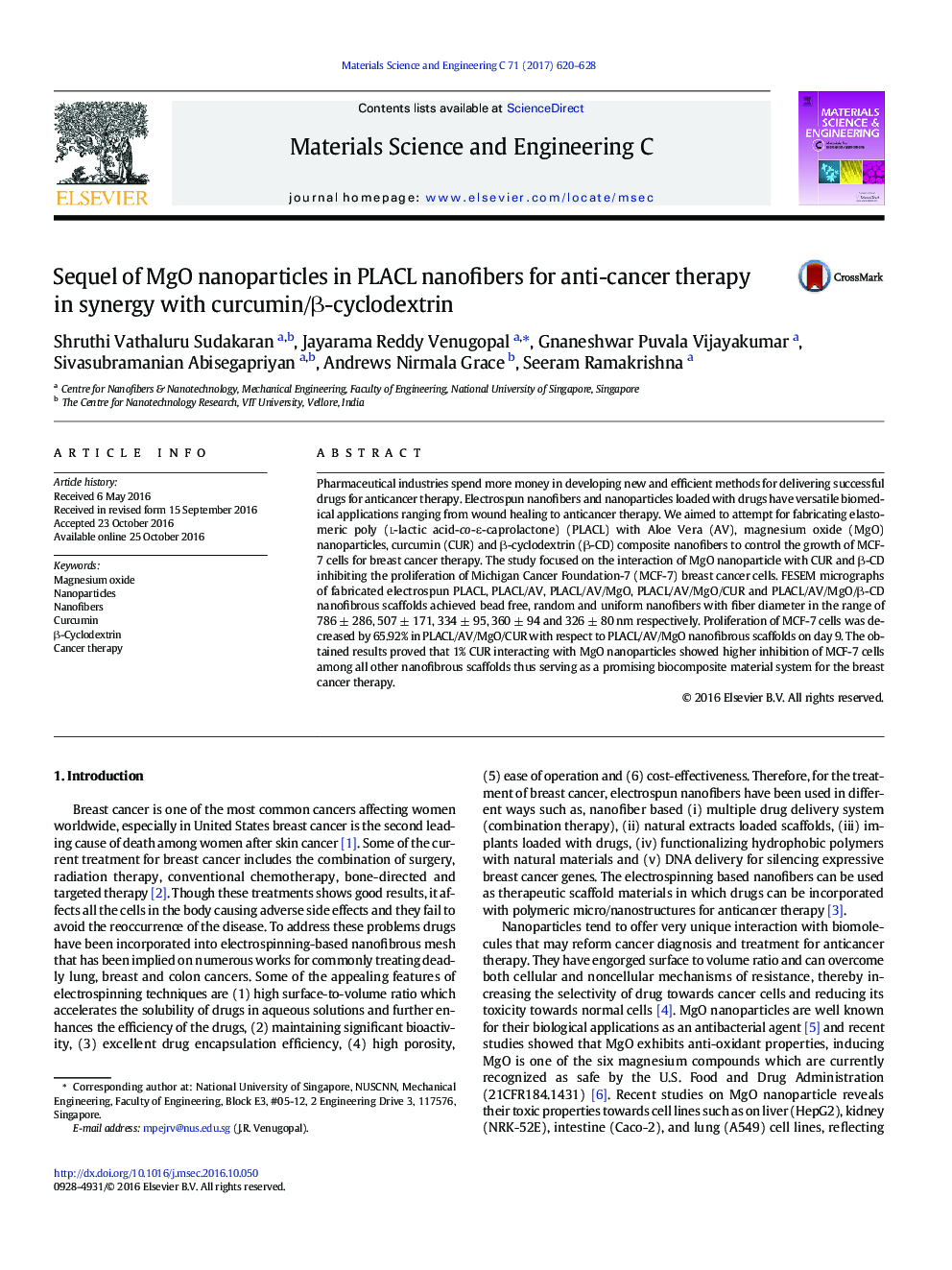| Article ID | Journal | Published Year | Pages | File Type |
|---|---|---|---|---|
| 5434668 | Materials Science and Engineering: C | 2017 | 9 Pages |
â¢Biocomposite nanofibrous scaffolds fabricated bead free, uniform and possess rough fiber surfaceâ¢Aloe Vera and MgO nanoparticles initiates cell adhesion and proliferationâ¢CUR (1%)/MgO nanoparticle showed higher level of cell inhibition of MCF-7 cells compared to all other nanofibrous scaffoldsâ¢PLACL/AV/MgO/CUR nanofibrous scaffolds proved to be a potential material system for cancer therapy
Pharmaceutical industries spend more money in developing new and efficient methods for delivering successful drugs for anticancer therapy. Electrospun nanofibers and nanoparticles loaded with drugs have versatile biomedical applications ranging from wound healing to anticancer therapy. We aimed to attempt for fabricating elastomeric poly (l-lactic acid-co-ε-caprolactone) (PLACL) with Aloe Vera (AV), magnesium oxide (MgO) nanoparticles, curcumin (CUR) and β-cyclodextrin (β-CD) composite nanofibers to control the growth of MCF-7 cells for breast cancer therapy. The study focused on the interaction of MgO nanoparticle with CUR and β-CD inhibiting the proliferation of Michigan Cancer Foundation-7 (MCF-7) breast cancer cells. FESEM micrographs of fabricated electrospun PLACL, PLACL/AV, PLACL/AV/MgO, PLACL/AV/MgO/CUR and PLACL/AV/MgO/β-CD nanofibrous scaffolds achieved bead free, random and uniform nanofibers with fiber diameter in the range of 786 ± 286, 507 ± 171, 334 ± 95, 360 ± 94 and 326 ± 80 nm respectively. Proliferation of MCF-7 cells was decreased by 65.92% in PLACL/AV/MgO/CUR with respect to PLACL/AV/MgO nanofibrous scaffolds on day 9. The obtained results proved that 1% CUR interacting with MgO nanoparticles showed higher inhibition of MCF-7 cells among all other nanofibrous scaffolds thus serving as a promising biocomposite material system for the breast cancer therapy.
Graphical abstractDownload high-res image (142KB)Download full-size image
